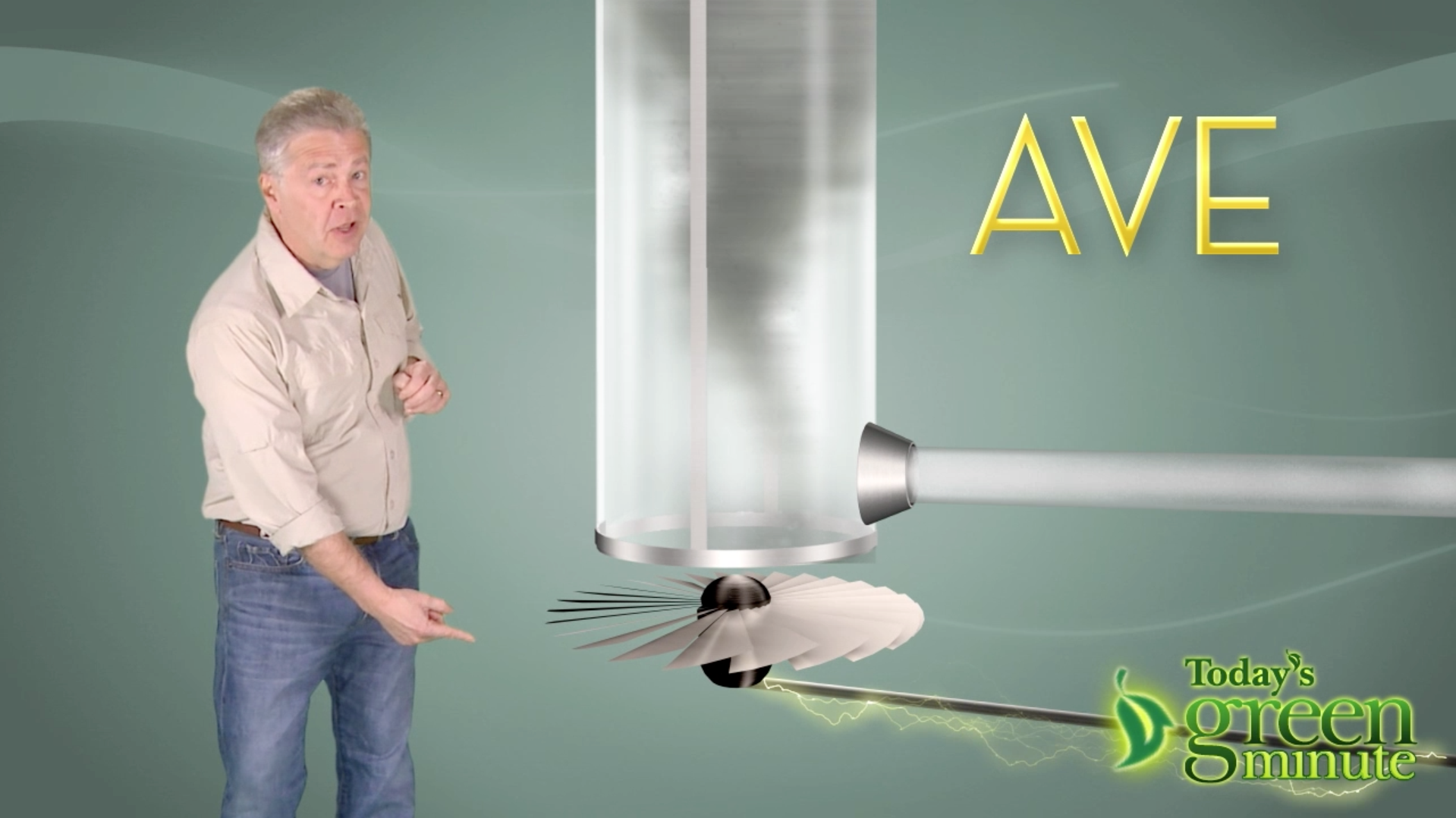Tornado In A Tube: Electric Power May Flow From 'Atmospheric Vortex Generator'

Tornadoes are among the most destructive forces of nature. Many people have dreamed of harnessing the power in those swirling winds to generate electrical energy.
Canadian engineer Louis Michaud is currently building a prototype of what he calls an “Atmospheric Vortex Engine” (AVE). Michaud is not proposing to tap natural tornadoes; he wants to create his own.
Warm air is piped into the bottom of a cylindrical confinement tube. Cold air is introduced from above. If the difference in temperature is large – the "temperature gradient is steep" – a miniature tornado can begin to spin. The swirling air drives wind turbines below, generating electric current.
A vortex in air is not simple to explain. As cooler air sinks through warmer, a trend of rotation naturally develops due to several hydro-mechanical forces acting in concert. These include the inertia of the air molecules, their tendency to spin after colliding, conservation of angular momentum once they start spinning, and centripetal acceleration of the molecules around a column of deepening low pressure at the center of the spinning air mass.
Machaud’s company, AVEtec Energy Corporation, says the project produces zero carbon emissions. Costs could be as low as $.03/kilowatt hour, Michaud believes. "The power in a tornado is undisputed," he says. "My work has established the principles by which we can control and exploit that power to provide clean energy on an unprecedented scale."
To get the twister twisting, a start-up heat source would be required. Continuous heat could be provided by a large sustainable source such as warm seawater or surplus heat from an industrial process or plant.
AVEtec Energy is currently constructing a 26-foot prototype. The Company expects that device to produce a vortex 11 inches in diameter and 140-feet high. But Michaud is planning to scale up to a full-size power station, which could create a 330-foot diameter tornado and generate 200 megawatts of electric power.
Sign up for the Live Science daily newsletter now
Get the world’s most fascinating discoveries delivered straight to your inbox.









